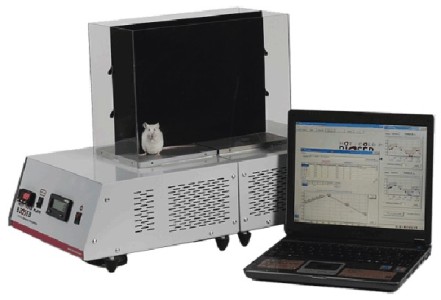Authors
Barbe MF, Hilliard BA, Fisher PW, White AR et al
Lab
Department of Anatomy and Cell Biology, Lewis Katz School of Medicine, Temple University , Philadelphia , PA , USA.
Journal
Connective Tissue Research
Abstract
Purpose/Aim: Substance P-NK-1R signaling has been implicated in fibrotic tendinopathies and myositis. Blocking this signaling with a neurokinin 1 receptor antagonist (NK1RA) has been proposed as a therapeutic target for their treatment.
Materials and Methods: Using a rodent model of overuse injury, we pharmacologically blocked Substance P using a specific NK1RA with the hopes of reducing forelimb tendon, muscle and dermal fibrogenic changes and associated pain-related behaviors. Young adult rats learned to pull at high force levels across a 5-week period, before performing a high repetition high force (HRHF) task for 3 weeks (2 h/day, 3 days/week). HRHF rats were untreated or treated in task weeks 2 and 3 with the NK1RA, i.p. Control rats received vehicle or NK1RA treatments.
Results: Grip strength declined in untreated HRHF rats, and mechanical sensitivity and temperature aversion increased compared to controls; these changes were improved by NK1RA treatment (L-732,138). NK1RA treatment also reduced HRHF-induced thickening in flexor digitorum epitendons, and HRHF-induced increases of TGFbeta1, CCN2/CTGF, and collagen type 1 in flexor digitorum muscles. In the forepaw upper dermis, task-induced increases in collagen deposition were reduced by NK1RA treatment.
Conclusions: Our findings indicate that Substance P plays a role in the development of fibrogenic responses and subsequent discomfort in forelimb tissues involved in performing a high demand repetitive forceful task.
BIOSEB Instruments Used
Thermal Place Preference, 2 Temperatures Choice Nociception Test (BIO-T2CT)
Source :
https://www.tandfonline.com/doi/full/10.1080/03008207.2019.1653289

 Douleur - Allodynie/Hyperalgésie Thermique
Douleur - Allodynie/Hyperalgésie Thermique Douleur - Spontanée - Déficit de Posture
Douleur - Spontanée - Déficit de Posture Douleur - Allodynie/Hyperalgésie Mécanique
Douleur - Allodynie/Hyperalgésie Mécanique Apprentissage/Mémoire - Attention - Addiction
Apprentissage/Mémoire - Attention - Addiction Physiologie & Recherche Respiratoire
Physiologie & Recherche Respiratoire




































 Douleur
Douleur Système Nerveux Central (SNC)
Système Nerveux Central (SNC)  Neurodégénérescence
Neurodégénérescence Système sensoriel
Système sensoriel Système moteur
Système moteur Troubles de l'humeur
Troubles de l'humeur Autres pathologies
Autres pathologies Système musculaire
Système musculaire Articulations
Articulations Métabolisme
Métabolisme Thématiques transversales
Thématiques transversales Congrès & Meetings
Congrès & Meetings 